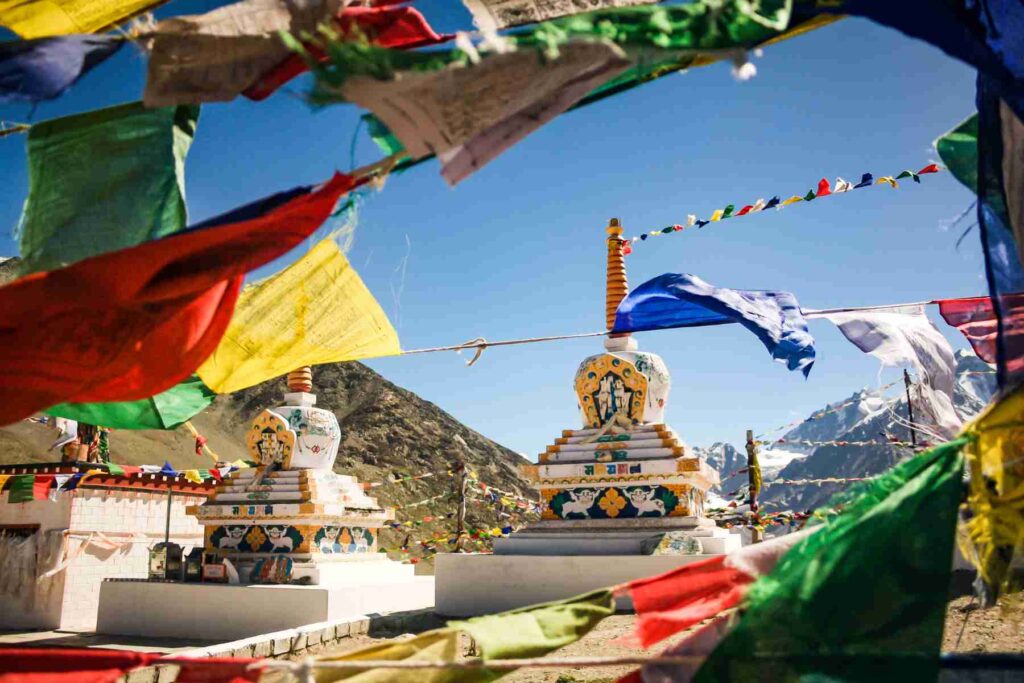Spiti Valley, nestled in the remote corners of Himachal Pradesh, is often called “the middle land” – a mystical region between India and Tibet. While travelers often visit the famous spots like Kaza, Tabo, and Dhankar, the true essence of Spiti lies hidden in its lesser-known villages. These offbeat gems remain untouched by mass tourism, offering raw beauty, authentic culture, and unmatched solitude. Whether you’re an adventurer, a spiritual seeker, or a cultural explorer, these hidden hamlets deserve a spot on your Spiti Valley tour.
Let’s uncover the top 8 offbeat villages in Spiti Valley that you probably haven’t heard of – but absolutely must visit.
1. Komik – The World’s Highest Motorable Village
Perched at an altitude of 4,587 meters, Komik holds the title of the world’s highest motorable village. Despite its fame, it remains relatively untouched due to its remoteness. Life here is slow, peaceful, and deeply spiritual. The iconic Tangyud Monastery dominates the village, offering panoramic views of barren mountains and blue skies.
Travel Tip: Carry essentials as there are limited shops. Accommodation is available in homestays run by locals.
2. Lhalung – A Spiritual Retreat in Isolation
Lhalung is a serene village located about 14 km from Dhankar. It’s home to the ancient Lhalung Monastery, believed to be over a thousand years old. This village gets fewer visitors, making it an ideal destination for meditation and solitude. The locals are warm-hearted and will welcome you with traditional food and stories of ancient Buddhist legends.
A short hike around the village opens up to surreal views of snow-capped peaks and deep gorges – a dream for photographers and trekkers alike.
3. Demul – A Self-Sustainable Eco-Village
Demul is a progressive and eco-conscious village that has set a model for sustainable rural tourism in Spiti. With a community-managed homestay system, every family gets a chance to host travelers. Located at an altitude of 4,300 meters, Demul offers experiences like yak safaris, traditional Spitian cooking classes, and storytelling sessions around bonfires.
A visit to Demul is not just travel – it’s a lesson in slow, sustainable living. Don’t forget to buy local wool products from the community cooperative.
4. Tashigang – A Tiny Hamlet Near the Indo-Tibet Border
With just a handful of homes, Tashigang is one of the most isolated villages in Spiti. Located near the Indo-Tibet border, this village sits silently amidst the vast Himalayan canvas. From here, the views of Chau Chau Kang Nilda peak are absolutely breathtaking. The route to Tashigang from Kaza involves a scenic ride through the high-altitude grazing lands.
Halfway through your exploration, it’s worth stopping at Keylong market in Spiti Valley to pick up essentials, souvenirs, or local woolen goods before heading deeper into the remoteness of these villages.
5. Mane – The Untouched Beauty Along Spiti River
Divided into two parts – Mane Yogma (lower) and Mane Gogma (upper), this village sits on the banks of the Spiti River and offers a unique blend of nature and culture. Very few tourists know about this village, making it ideal for camping, hiking, or simply soaking in the silence.
Nearby attractions include a pristine glacial lake accessible via a short trek, making it a hidden gem for adventure enthusiasts.
6. Gette – A Quiet Alternative to the Crowded Key Monastery Area
While most travelers stop at Key Monastery, few venture further to Gette, a small hamlet perched higher up on the mountain. This peaceful village offers uninterrupted views of the Spiti Valley and the famous Key Monastery from a bird’s-eye perspective.
Gette is a photographer’s paradise, especially during sunset when the monastery glows golden against the barren backdrop. It’s a perfect picnic and photography spot away from the crowds.
7. Chicham – Home to Asia’s Highest Suspension Bridge
Chicham has gained recognition for the Chicham Bridge, which is the highest suspension bridge in Asia. However, the village itself remains unexplored. It’s connected to Kibber and offers several trekking opportunities, including the trek to the Chandratal Lake via Parang La Pass.
The village is ideal for nature lovers and photographers, with stunning landscapes, friendly locals, and traditional stone houses. You can spot blue sheep and even snow leopards in winter if you’re lucky.
8. Langza – The Fossil Village with a Prehistoric Touch
Though Langza is slowly getting attention for its massive Buddha statue and fossil-rich soil, it still holds an offbeat charm, especially if you stay overnight. Fossil hunting, interacting with local artists, and enjoying the surreal backdrop of Chau Chau Kang Nilda make Langza unforgettable.
Langza’s peaceful atmosphere is enhanced during sunrise and sunset when the golden light reflects off the brown slopes and whitewashed houses.
When is the Best Time to Explore These Villages?
Understanding the best time to visit Spiti Valley is crucial when planning to explore its offbeat gems. The ideal season is from late May to early October. During this time, the roads are open, weather is pleasant, and all villages are accessible. Winter months (November to March) bring heavy snowfall, cutting off many villages, but also offering unique winter experiences if you’re well prepared.
Traveling in summer gives you the full experience – local festivals, wildlife spotting, and lush alpine meadows in the higher reaches.
Final Thoughts
The true beauty of Spiti Valley lies beyond the popular tourist routes. These offbeat villages offer a glimpse into a world where nature rules, time slows down, and traditions thrive. By venturing into these hidden corners, you’ll not only experience untouched beauty but also support local communities striving to preserve their culture and way of life.
Whether you’re backpacking, motorbiking, or on a photography expedition, make sure these villages are part of your Spiti Valley tour itinerary. With each village offering its own story, you’re bound to return with memories more precious than any souvenir.
So pack your bags, charge your cameras, and head towards the forgotten heart of the Himalayas. And if you’re passing by or stocking up, don’t miss a quick visit to Keylong market in Spiti Valley for local essentials. For a smooth journey, always plan according to the best time to visit Spiti Valley to make the most of your high-altitude adventure.
- Top Offbeat Villages in Spiti Valley You Haven’t Heard Of
- These offbeat gems remain untouched by mass tourism, offering raw beauty, authentic culture, and unmatched solitude. Whether you're an adventurer, a spiritual seeker, or a cultural explorer, these hidden hamlets deserve a spot on your Spiti Valley tour.
- spiti trip, spiti valley
Related posts:
 United Airlines Abu Dhabi Office +1–888–839–0502…………….
United Airlines Abu Dhabi Office +1–888–839–0502…………….
 New Jersey’s Top Taxi Services: Your Ultimate Ride Guide to Navigating the Garden State with Ease
New Jersey’s Top Taxi Services: Your Ultimate Ride Guide to Navigating the Garden State with Ease
 Exploring the Alaska Airlines Terminal at SFO: Your Complete Traveler’s Guide
Exploring the Alaska Airlines Terminal at SFO: Your Complete Traveler’s Guide
 Explore the Sacred Sites with Taxi Taif Ziyarat and Makkah Ziyarat Taxi
Explore the Sacred Sites with Taxi Taif Ziyarat and Makkah Ziyarat Taxi
 Southwest Airlines Corpus Christi Office in Texas: What You Need to Know.
Southwest Airlines Corpus Christi Office in Texas: What You Need to Know.
 Top Reasons to Explore Red Dunes and Enjoy BBQ Dinner in Dubai
Top Reasons to Explore Red Dunes and Enjoy BBQ Dinner in Dubai
 5-Star Views, Gourmet Dining, and Harbour Lights: A Dinner Cruise Experience
5-Star Views, Gourmet Dining, and Harbour Lights: A Dinner Cruise Experience
 Romantic Escapes in Mahabaleshwar: A Couple’s Guide to Scenic Stays and Cozy Moments
Romantic Escapes in Mahabaleshwar: A Couple’s Guide to Scenic Stays and Cozy Moments







